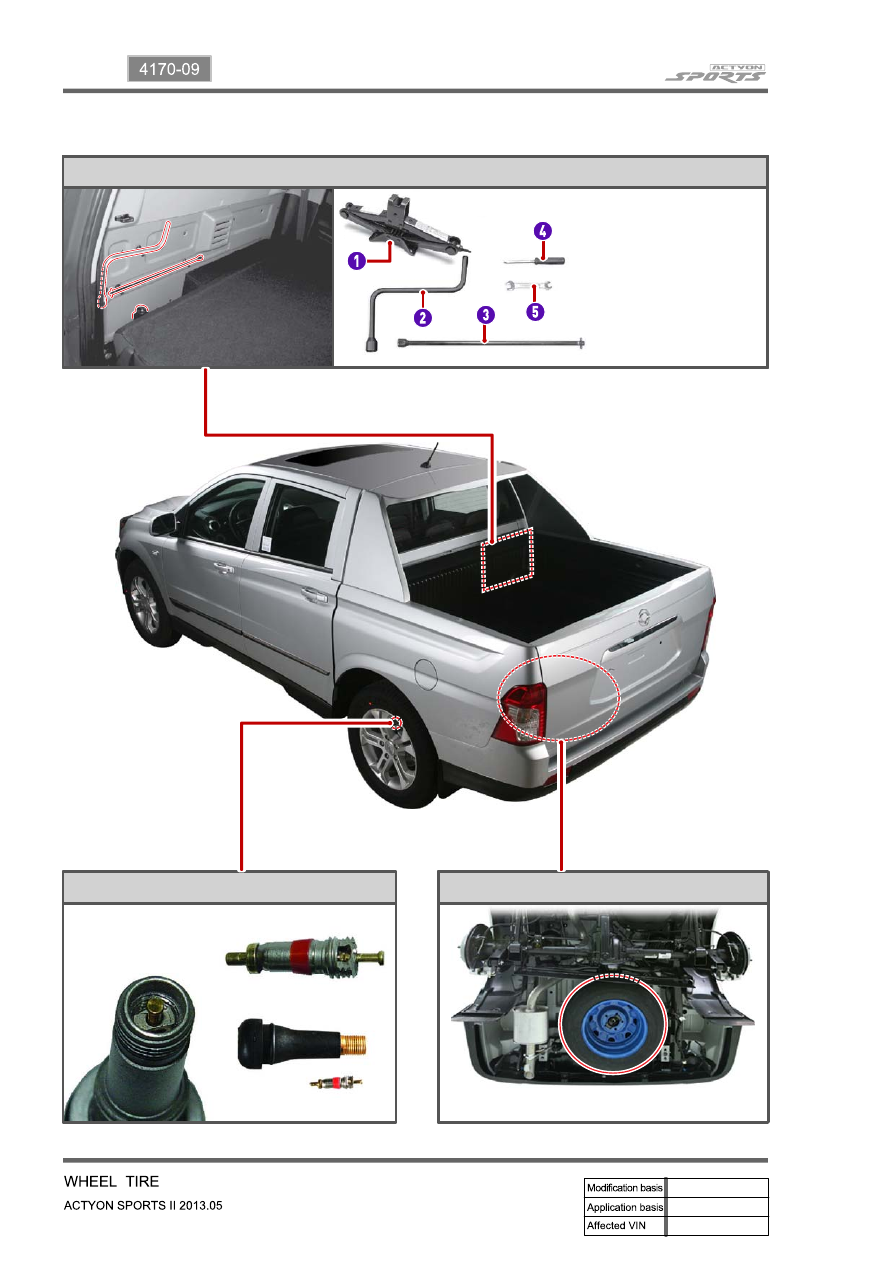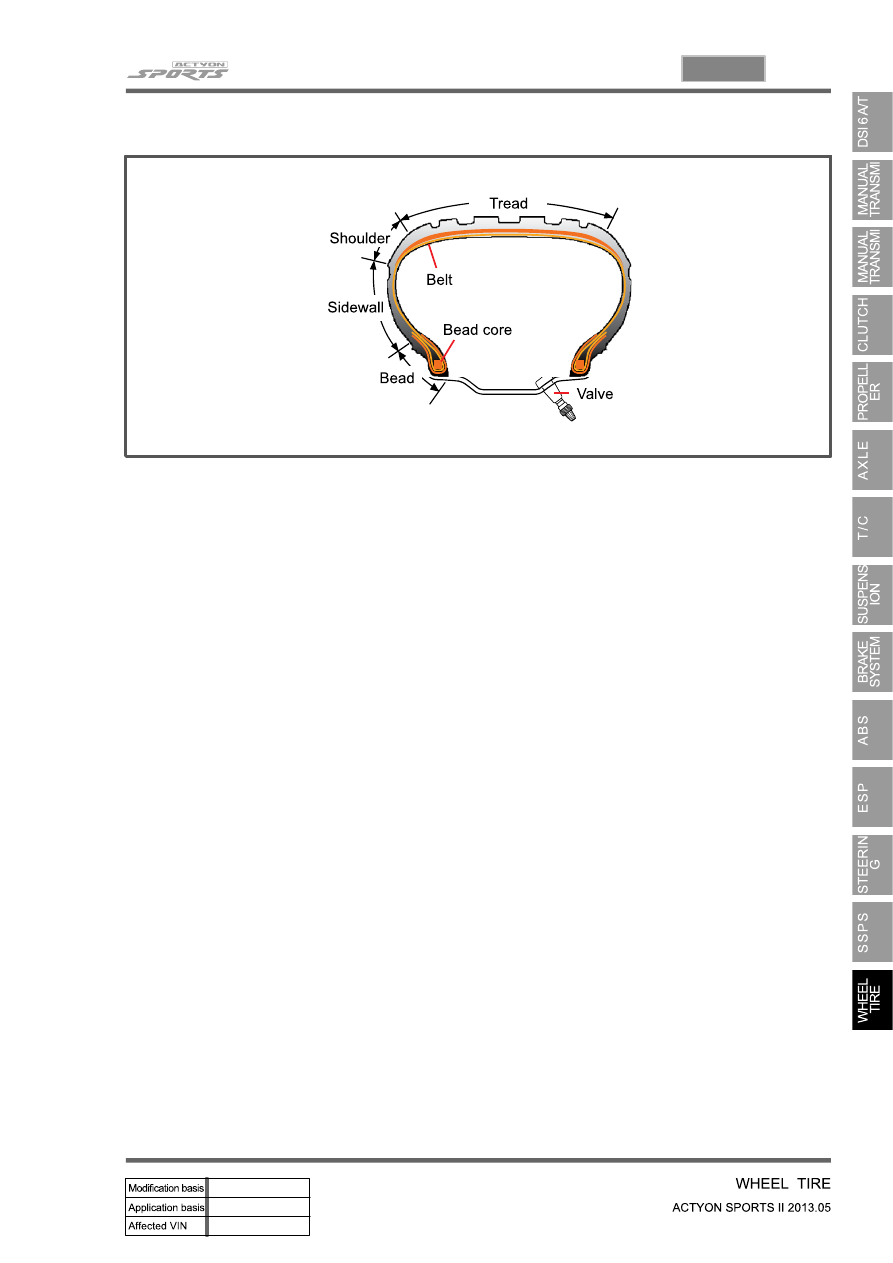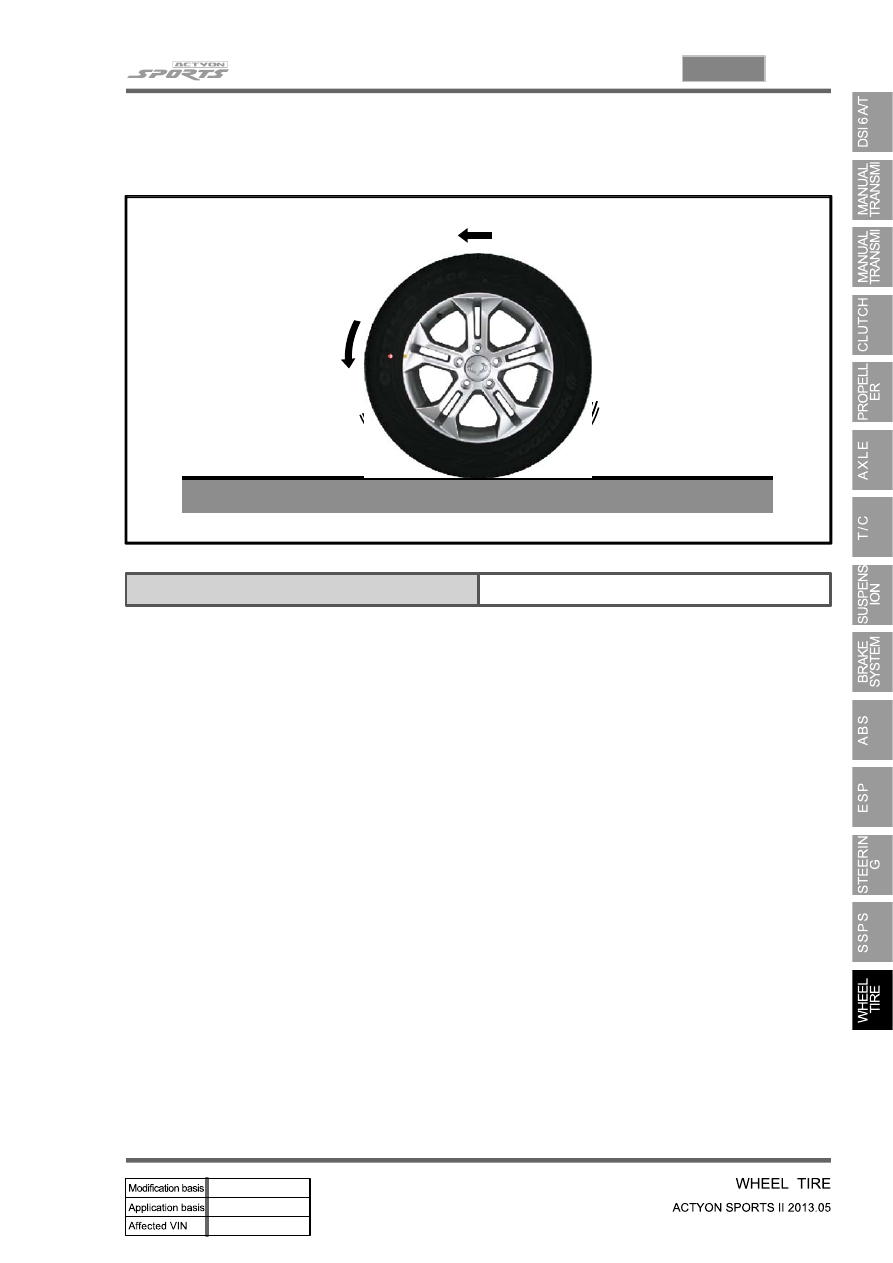SsangYong Actyon Sports II. Manual — part 169

14-12
OVM Tools
Location
▶
Valve insert
Spare tire
Jack (pantograph jack)
Wheel wrench
Jack connection
Driver (+, -)
Spanner
1.
2.
3.
4.
5.

14-13
4170-09
Structure of Tire
▶
Tread
This thick layer of rubber provides the interface between the tire and the road. Wear-resistant rubber is
used to protect the carcass and belt against fractures and impacts and to deliver a long driving life.
Shoulder
Located between the tread and sidewall, the shoulder rubber is the thickest so that the design must
allow for the easy diffusion of heat generated within the tire while driving.
Sidewall
The part between the shoulder and bead, the flexible sidewall protects the carcass and enhances the
ride. A tire’s type, size, structure, pattern, manufacturing company, product name and various
characters are indicated here.
Bead
The bead attaches the tire to the rim and wraps the end of the cord fabric. Comprised of the bead wire,
core, flipper and other parts, the bead is generally designed to be slightly tight around the rim so that in
the case of a sudden drop in inflation pressure, the tire will not fall off the rim.
Carcass
As the most important framework of a tire, the entire inner layer of cord fabric is called the carcass. The
carcass acts to support air pressure, vertical load and absorb shocks.

14-14
Tire Unit Indication
▶
Tire Inflation Pressure (32 psi)
▶
Proper inflation
pressure
Excessive inflation pressure
Low inflation
pressure
Aspect ratio (%)
= Nominal section height (H) / Nominal section
width (W)
X 100
The contact area between the
ground and tire faces the tread
layer completely. Thus the
driving force and the braking
force are optimized, and the tire
is worn out evenly resulting in
increased life.
The contact area between the
ground and tire is not enough,
so the tire is worn out unevenly
and the tire is vulnerability to
outside influence.
The contact area between the
ground and tire is excessive, so
a lot of heat is generated and
the tire is worn out unevenly
and abnormally.
Tread width
Tread width
Tread width

14-15
4170-09
During driving, the rotating tire repeats deformation and restoring movement in is tread. This happens
when the tire pressure is low in high speed driving.
However, when the wheel rotating speed is fast, the tire is deformed even before it is restored to its
original shape and the trembling wave appears on the tread portion. If this symptom lasts for an
extended period of time, the tire can be blown out in a short period of time.
If the standing wave symptom occurs on the tire, rubber on the tread comes off and eventually the tire
can be blown out which is very dangerous. When driving at high speed, the inflation pressure should be
increased to decrease heat generation due to extension and contraction motion, to decrease
hydroplaning and to prevent standing wave.
To prevent this symptom, it is recommended to increase the tire pressure 10 ~ 30 % higher than the
specified pressure value in high speed driving.
Specified tire inflation pressure
32psi
2. ABNORMAL TIRE SYMPTOM
Standing Wave
▶

Нет комментариевНе стесняйтесь поделиться с нами вашим ценным мнением.
Текст